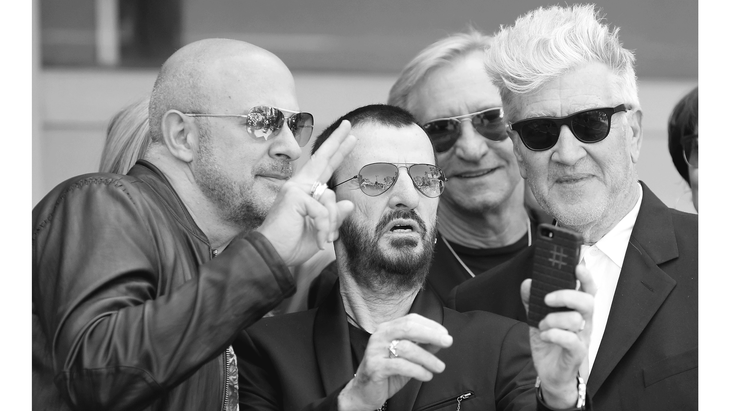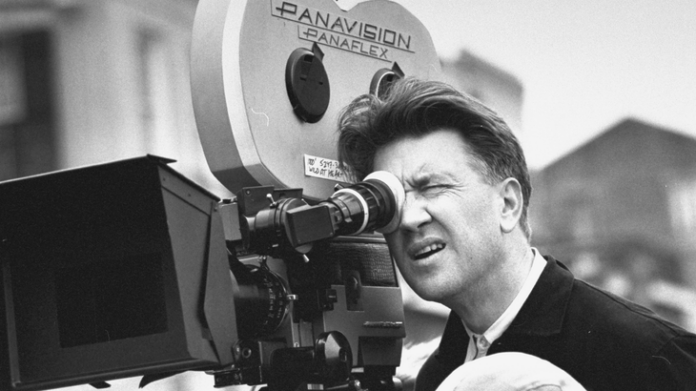“], “filter”: { “nextExceptions”: “img, blockquote, div”, “nextContainsExceptions”: “img, blockquote, a.btn, a.o-button”} }”>
Heading out the door? Read this article on the new Outside+ app available now on iOS devices for members!
>”,”name”:”in-content-cta”,”type”:”link”}}”>Download the app.
In his book Catching the Big Fish: Meditation, Consciousness, and Creativity, visionary filmmaker David Lynch wrote, “Ideas are like fish. If you want to catch little fish, you can stay in the shallow water. But if you want to catch the big fish, you’ve got to go deeper. Down deep, the fish are more powerful and more pure….And they’re very beautiful.” And the way to access the deep-down levels of creativity, Lynch repeatedly asserted throughout his career, is meditation.
Lynch, who passed away on January 15, 2025, at age 78, was known for celebrated works including Mulholland Drive, Blue Velvet, Eraserhead, and Twin Peaks. He created worlds that were strange, uncanny, and brilliant. Lynch’s work was so singular as to birth a term in the filmmaking industry. To create something described as “Lynchian” means it is wild, highly creative, unique to the world, and off-kilter in the best of ways.
Take, for example, the opening scene of Blue Velvet. The camera pans across brightly hued roses before zooming out to a cherry-red fire truck, kids crossing an intersection, and a glimpse of suburbia before focusing the audience close in on spiky green grass and into the dirt underneath, which is crawling with ants. Right away the person watching is taken into a universe of superficiality and depth, mundane and darkness.
In Lynch’s vision, there’s a constant acknowledgment that there is always more than first meets the eye. He left in his wake not just his catalog of cult and mainstream classics but also a life speaking to the powers of meditation and what it can reveal to the creative mind. Lynch practiced and advocated for Transcendental Meditation, a practice in which meditators work with a mantra, relying on it over and over again as a tool for focusing and quieting the mind.
From that “hooking” of the mind—to use Lynch’s fishing terminology—one could access deeper levels of consciousness. And that, he reiterated time and again, is where some of the best and most original ideas live.
“I started Transcendental Meditation in 1973 and have not missed a single meditation ever since,” he famously said. “Twice a day, every day. It has given me effortless access to unlimited reserves of energy, creativity and happiness.”
David Lynch and Transcendental Meditation
Transcendental Meditation was developed in India in the mid-1950s by Maharishi Mahesh Yogi and is typically practiced twice a day for 15 to 20 minutes in complete silence, save for the mantra, or sacred sound, repeating inwardly. Interest in the technique grew in the West in the 1960s and ‘70s. Lynch was far from the only celebrity and creative drawn toward it. The Beatles and Beach Boys followed the practice, bringing it into the mainstream. Today, Jerry Seinfeld is said to sit down tot Transcendental Meditation daily. Hugh Jackman, Katy Perry, Sheryl Crow, Tom Hanks, Liv Tyler, and Lena Dunham also practice it.

Lynch not only practiced the technique but advocated for it. He founded the David Lynch Foundation in 2005, a nonprofit dedicated to sharing TM with at-risk populations for the purposes of decreasing stress and providing access to the wealth of creativity and wellness within. The nonprofit also shares the practice in schools, universities, correctional facilities, and through community outreach, focusing “efforts on underserved inner-city students, veterans with PTSD and their families and women and children who are survivors of violence and abuse,” according to the foundation website. In this way, Lynch used meditation to fuel not not only his inner world but the outer world around him.
Honoring Lynch’s legacy in the wake of his passing might mean watching some of his films. Perhaps it also means taking some time to explore meditation. “If you don’t already meditate,” Lynch said, “take my advice. Start. It will be the best decision you ever make.”
Exploring David Lynch’s Take on Transcendental Meditation
There are no shortage of words and reflections on life as seen through Lynch’s dual lenses of creativity and meditation. To explore the more Lynchian aspects of life, following are some of these quotes that reflect looking at life through the dual lenses of creativity and meditation.
1. “There’s an ocean of pure, vibrant consciousness inside each one of us.”
2. “I learned that just beneath the surface there’s another world, and still different worlds as you dig deeper. I knew it as a kid, but I couldn’t find the proof. It was just a kind of feeling. There is goodness in blue skies and flowers, but another force–a wild pain and decay–also accompanies everything.”
3. “It’s just a matter of expanding that ball of consciousness. And the ball of consciousness can expand to be infinite and unbounded.”
4. “Everything I learned in my life, I learned because I decided to try something new.”
5. “I hate slick and pretty things. I prefer mistakes and accidents. Which is why I like things like cuts and bruises – they’re like little flowers. I’ve always said that if you have a name for something, like ‘cut’ or ‘bruise,’ people will automatically be disturbed by it. But when you see the same thing in nature, and you don’t know what it is, it can be very beautiful.”
6. “It’s so freeing, it’s beautiful in a way, to have a great failure, there’s nowhere to go but up.”
7. “I don’t know why people expect art to make sense. They accept the fact that life doesn’t make sense.”
8. “Black has depth.. you can go into it.. And you start seeing what you’re afraid of. You start seeing what you love, and it becomes like a dream.”
9. “Don’t fight the darkness. Don’t even worry about the darkness. Turn on the light and the darkness goes. Turn up that light of pure consciousness: Negativity goes.”
10. “Music, painting, cinema—this is the art of life.”













